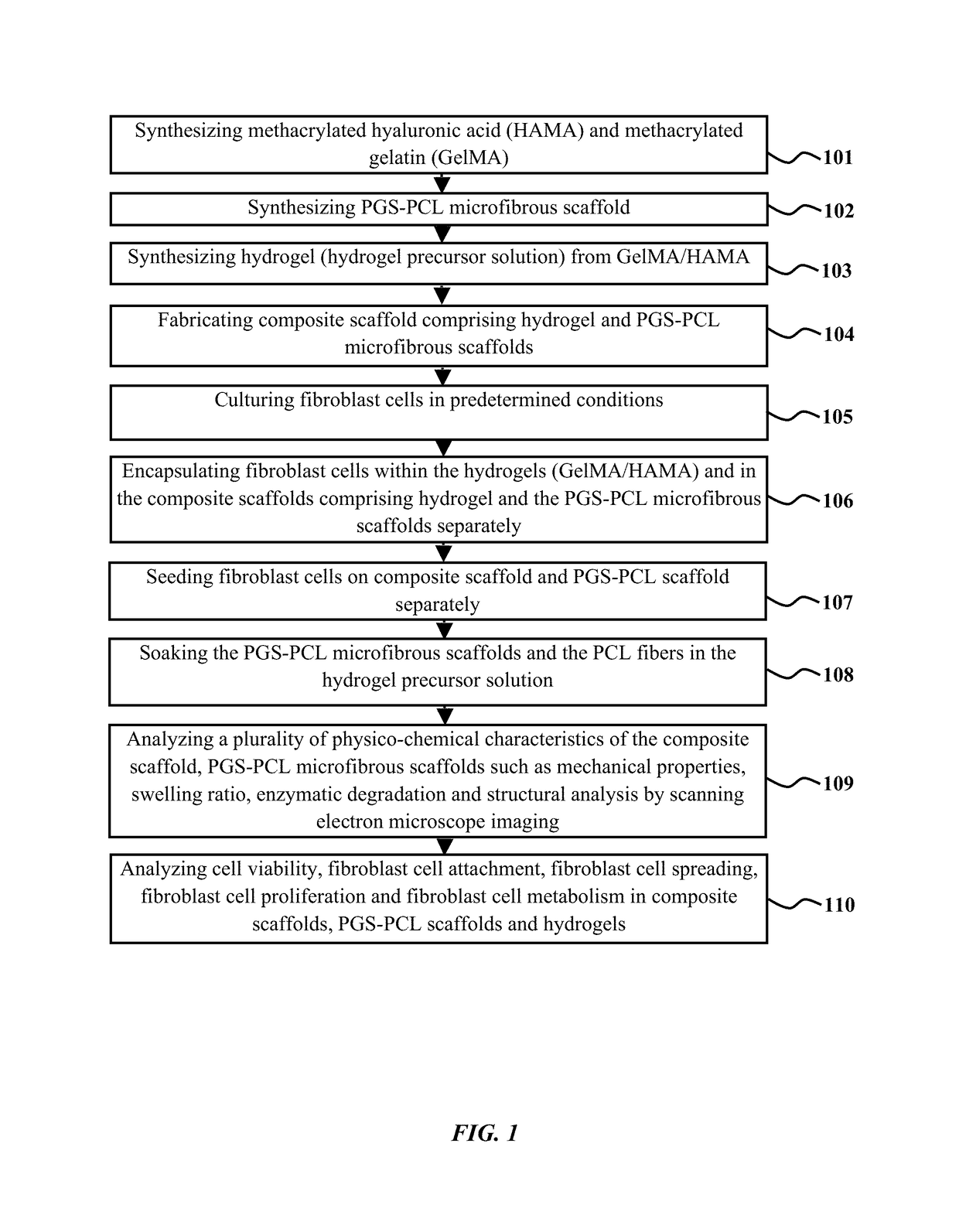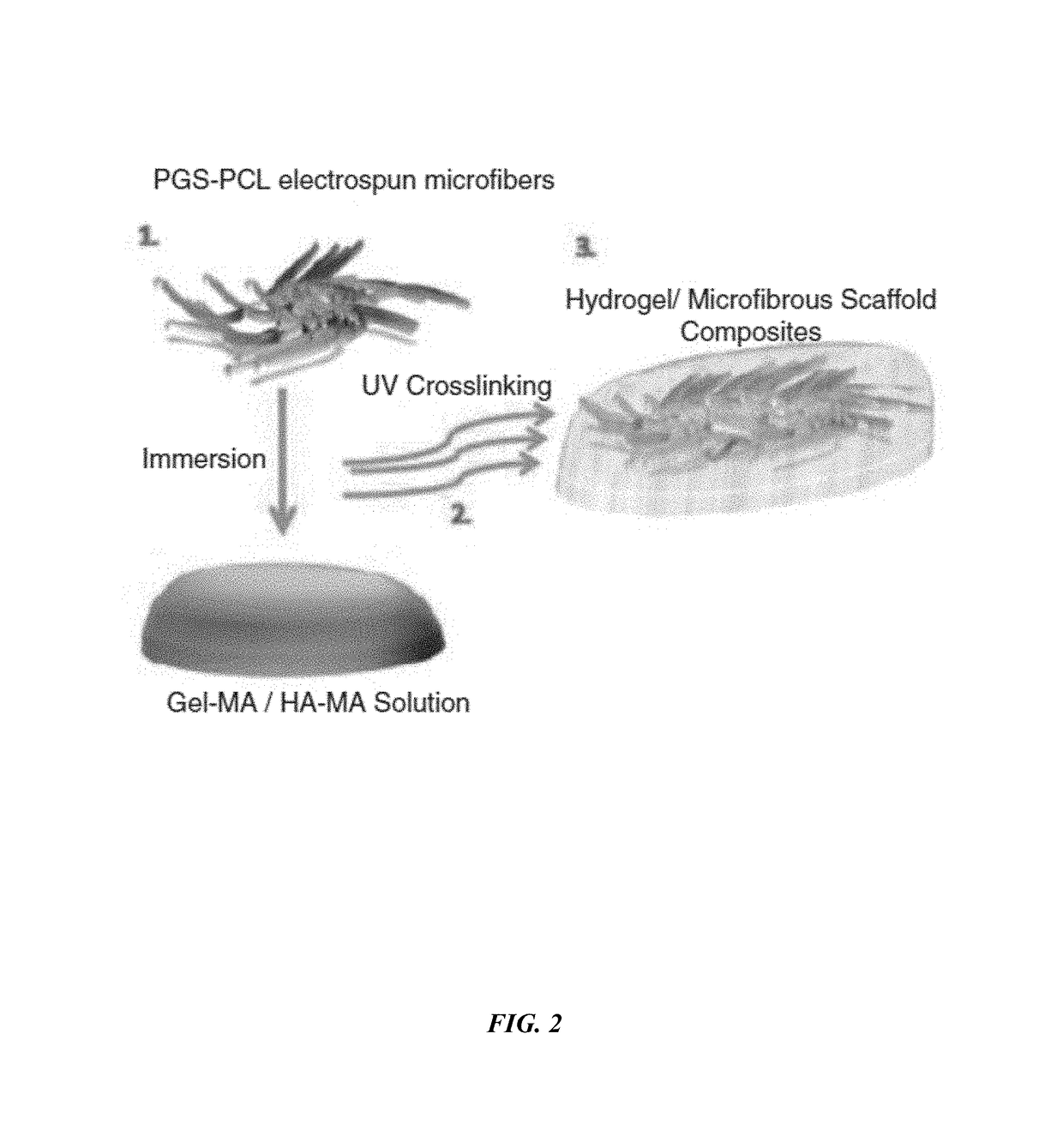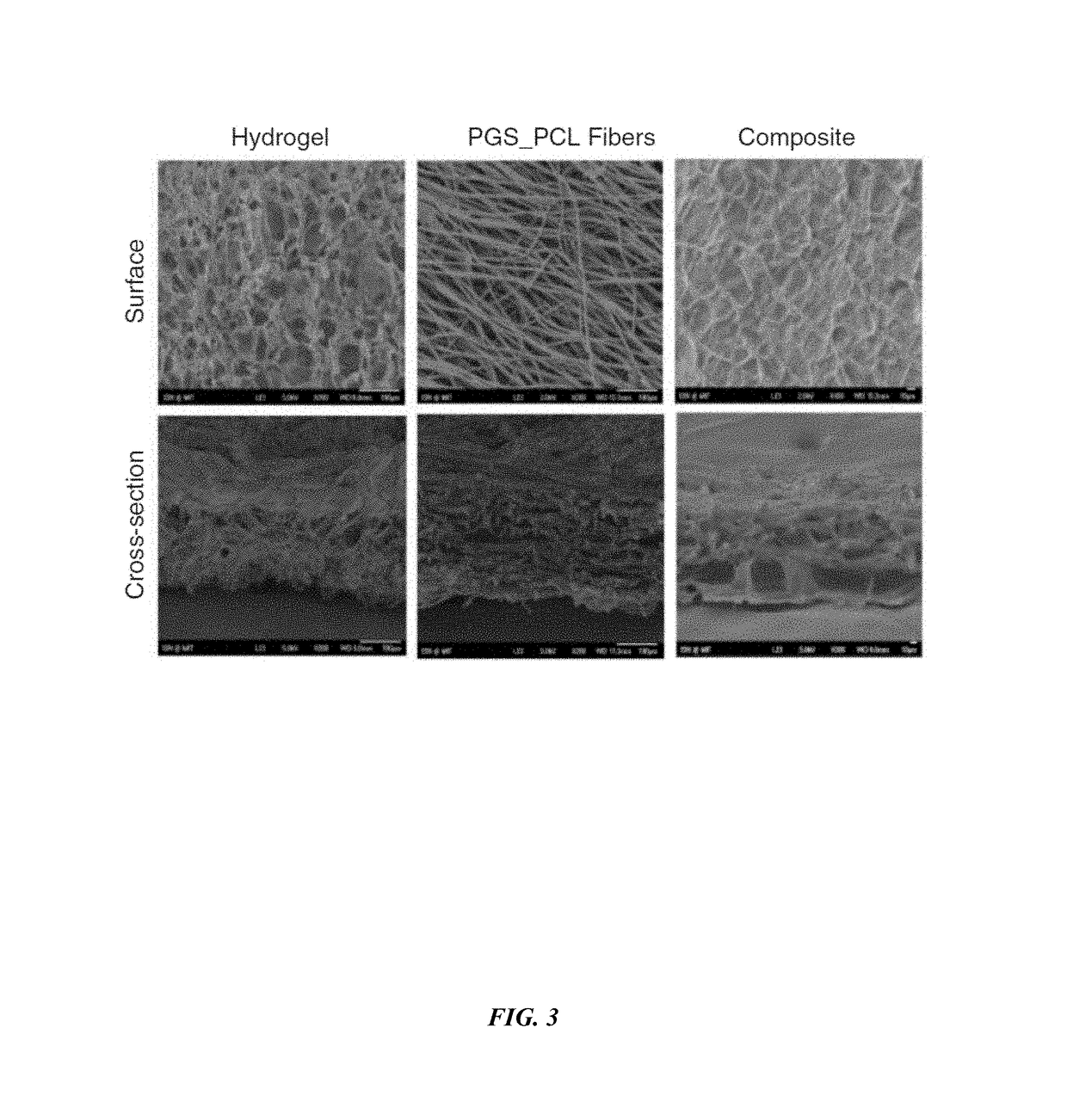Scaffold for skin tissue engineering and a method of synthesizing thereof
a skin tissue engineering and scaffold technology, applied in general culture methods, skeletal/connective tissue cells, animal/human proteins, etc., can solve the problems of hydrogels lacking the structural integrity necessary for skin formation, hydrogels not having mechanical integrity, etc., to achieve the effect of improving mechanical properties of skin tissue engineering
- Summary
- Abstract
- Description
- Claims
- Application Information
AI Technical Summary
Benefits of technology
Problems solved by technology
Method used
Image
Examples
Embodiment Construction
[0020]The primary objective of the embodiment herein is to integrate electrospun poly (glycerol sebacate) (PGS)-poly (ε-caprolactone) (PCL microfiber scaffolds, which possess enhanced mechanical properties for skin tissue engineering, within a hybrid hydrogel made from methacrylated hyaluronic acid and methacrylated gelatin.
[0021]Another object of the embodiment herein is to provide a composite biomaterial which combines the properties of extracellular matrix, mimicking hydrogels and elastomers poly (glycerol sebacate)-poly (ε-caprolactone) (PGS-PCL) electrospun (ES) scaffolds to mimic the cellular environment and mechanical properties of the skin tissue.
[0022]Yet another object of the embodiment herein is to provide a hydrogel composite scaffold for retaining cells within the composite structures, while PGS-PCL component provides mechanical strength and a porous structure to support tissue growth.
[0023]Yet another object of the embodiment herein is to utilize extracellular matrix t...
PUM
| Property | Measurement | Unit |
|---|---|---|
| pH | aaaaa | aaaaa |
| temperature | aaaaa | aaaaa |
| molecular weight | aaaaa | aaaaa |
Abstract
Description
Claims
Application Information
 Login to View More
Login to View More - R&D
- Intellectual Property
- Life Sciences
- Materials
- Tech Scout
- Unparalleled Data Quality
- Higher Quality Content
- 60% Fewer Hallucinations
Browse by: Latest US Patents, China's latest patents, Technical Efficacy Thesaurus, Application Domain, Technology Topic, Popular Technical Reports.
© 2025 PatSnap. All rights reserved.Legal|Privacy policy|Modern Slavery Act Transparency Statement|Sitemap|About US| Contact US: help@patsnap.com



